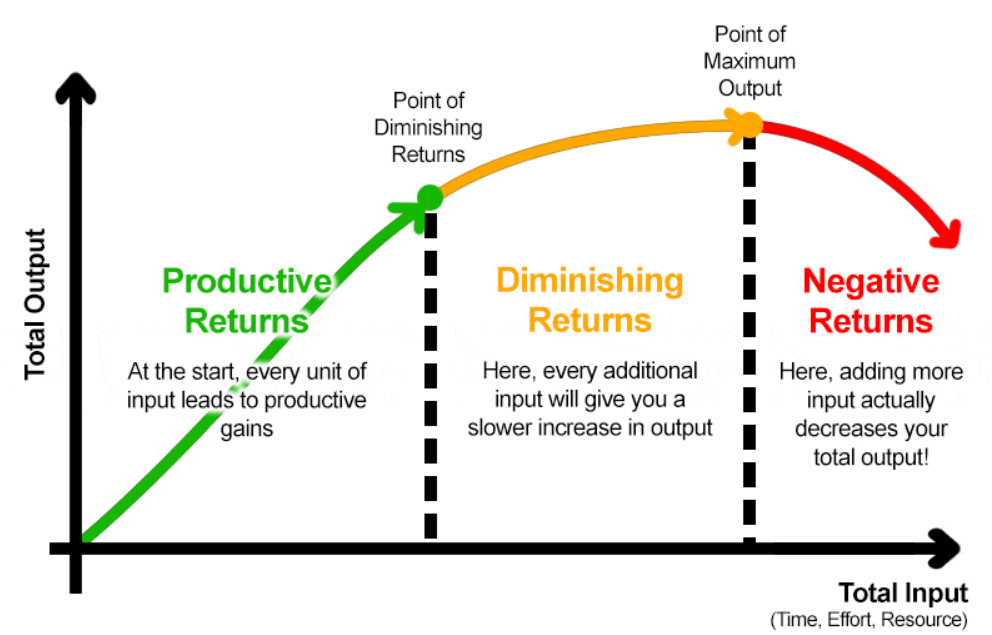📘 Law of Diminishing Returns
🔍 Definition (Textbook Style):
The Law of Diminishing Returns states that if one input in the production process is increased while all other inputs are held constant, a point will eventually be reached at which the additions to output (marginal returns) begin to decrease. In other words, each additional unit of the variable input will contribute less and less to total output.

🧠 Key Concepts:
-
Applies in the short run when at least one factor is fixed (like capital or land).
-
The variable factor is often labour or raw materials.
-
Initially, increasing the variable input leads to increasing marginal returns, but after a certain point, diminishing marginal returns set in.
-
Eventually, adding more units of the variable input can even reduce total output (negative returns).
📈 Three Stages of Production:
-
Increasing Returns: Each additional input results in a larger increase in output (due to better utilization of fixed inputs).
-
Diminishing Returns: Output continues to increase, but at a decreasing rate.
-
Negative Returns: Output begins to fall as additional units of input are added.
📊 Illustrative Example:
| Units of Labour | Total Output | Marginal Product |
|---|---|---|
| 1 | 10 | 10 |
| 2 | 25 | 15 |
| 3 | 35 | 10 |
| 4 | 42 | 7 |
| 5 | 46 | 4 |
| 6 | 47 | 1 |
| 7 | 46 | -1 (Negative) |
Here, you can observe increasing marginal returns (till 2 workers), then diminishing returns, and finally negative returns.
⚖️ Real-World Example:
Imagine a small bakery with a fixed number of ovens (capital). Initially, adding more workers improves output because work is better divided. But after a point, there are too many workers and not enough ovens—leading to crowding and inefficiency. Output increases more slowly, and eventually might even fall.
📌 Conclusion:
The Law of Diminishing Returns highlights the importance of optimal input use and helps businesses decide how much of a variable input to use before productivity starts to decline.